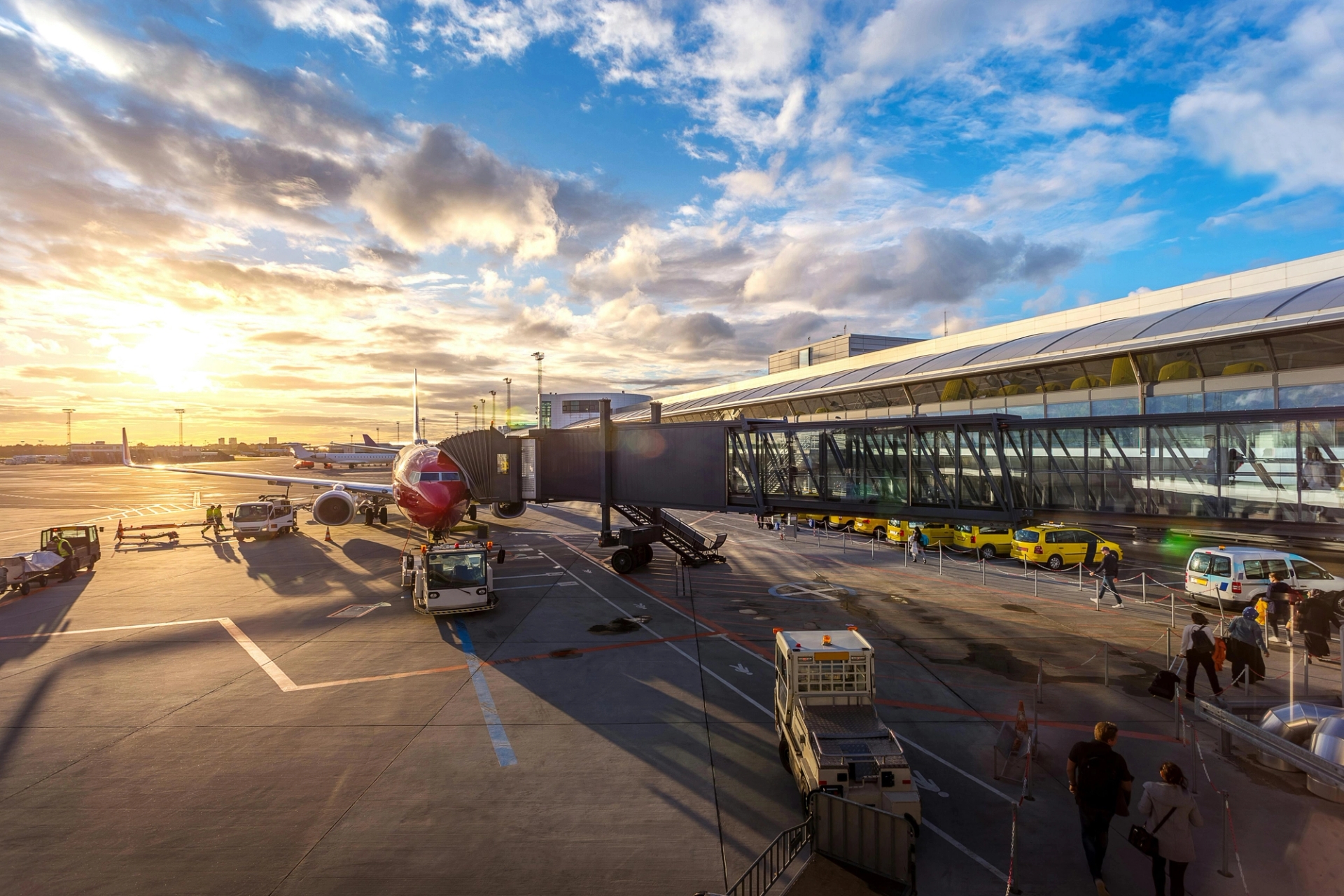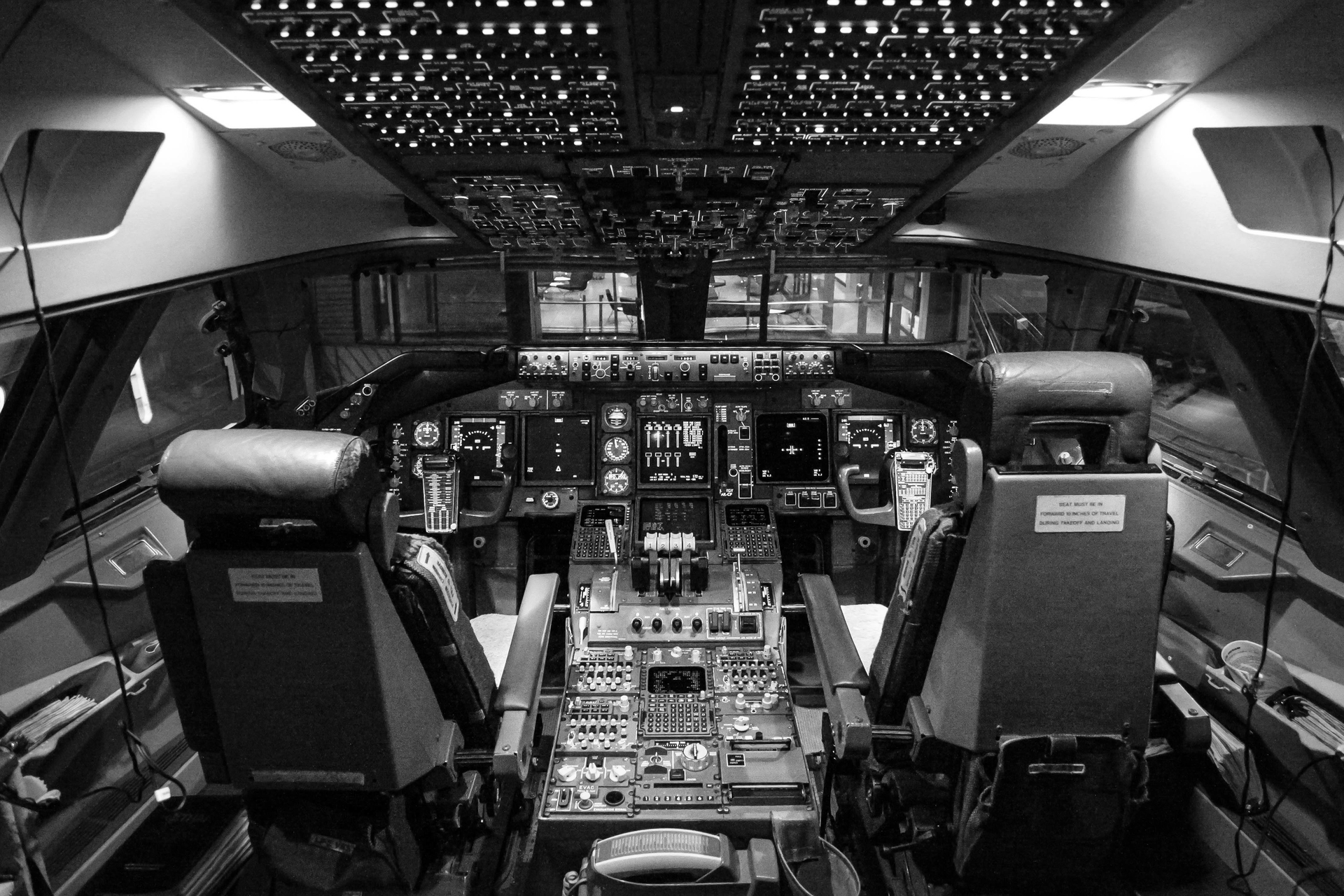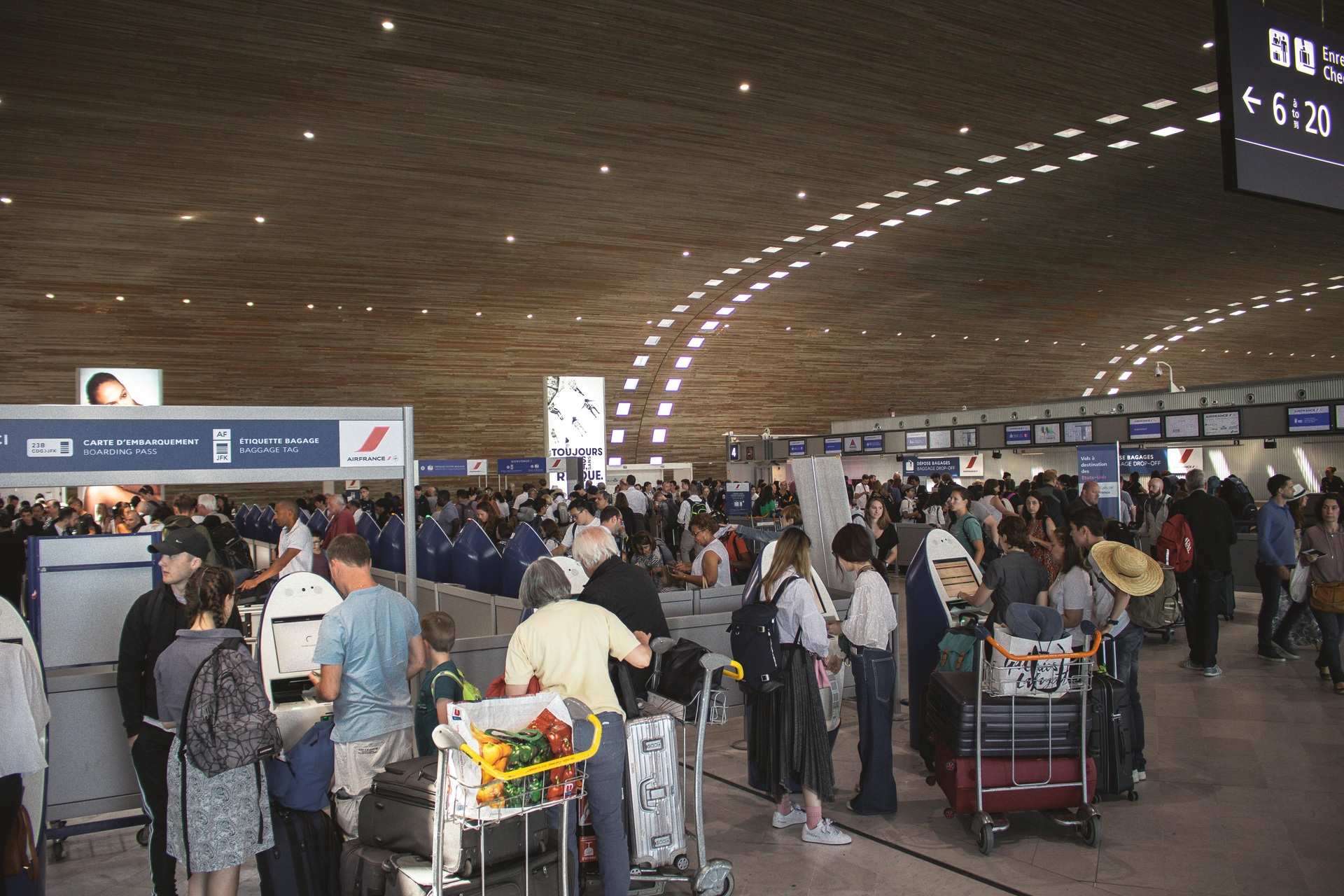
AeroGenie — Your Intelligent Copilot.
Enhancing Supplier Risk Assessment in Aviation Using AI
August 08, 2025
AI is changing how aviation companies assess supplier risk—from flagging disruptions early to building compliance-ready supply chains. See how real-time forecasting and Responsible AI practices are reshaping the industry.
The new frontier of risk: Why aviation needs smarter assessments now
Safety guidelines and best practices are continually evolving. By the time you get everyone in your organization on the same page, those final adhered-to guidelines may already be obsolete. Keeping up can be maddening, especially when you have to multiply these requirements across every single part of every plane in your entire fleet.
Increasingly, aviation companies are looking toward AI to ease the burden. Businesses are using artificial intelligence to automate and optimize risk-management processes, examining supplier stability and potential quality and delivery constraints.
Traditional aviation risk assessment tools focus heavily on mechanical failure rates, maintenance intervals, and regulatory adherence, but today’s solutions can paint a much fuller picture.
Supplier risk assessment tools using AI can:
- Automate and optimize MRO workflows.
- Evaluate supplier risk, including supplier eco-systems exiting (or potential) wars, tariffs, and geopolitical disruptors.
- Automate decision-making and workflows across the entire supply network.
AI has tremendous potential to manage risk, but use of the technology creates risk in and of itself.
Right now, aerospace companies are using machine learning to power predcictive maintenance with a success rate of over 95% (Delta Tech Ops), however it’s still unclear how much faith we should blindly place in opaque algorithms. Many believe the broader industry must define a clear strategy for AI risk management.
According to the Georgetown Center for Security and Emerging Technology (CSET), risk identification is no longer the biggest challenges; rather, it’s integrating AI into systems in a responsible way. The key is to implement artificial intelligence in a way that’s governable, transparent, and traceable across OEMs, airlines, suppliers, and other stakeholders (Georgetown CSET).
The Federal Aviation Administration (FAA) and other regulators are now trying to determine how AI might be safely introduced into current safety frameworks without compromising oversight. Meanwhile, aviation companies are rethinking how they conduct risk assessments for suppliers and other areas of their business.
Can AI help suppliers select safer, more reliable vendors, improving air safety? Right now, the primary metrics companies rely upon are on-time delivery rates and parts performance, with the latter often tricky to measure in a broad in an industry as broad and complex as aviation where parts change hands dozens of times or more.
But with sophisticated AI capabilities, the possibilities for vendor assessment expand dramatically. AI can help companies analyze the supplier’s software systems, automation tools, data-sharing protocols, and more.
The evolution of supplier risk and need for increasing oversight
With a global network of direct and tiered suppliers, risk management is more complicated than ever. But for aviation, with constant government scrutiny, narrow price margins, and constant supply chain instability, it’s even more fragmented.
A single disruption in a Tier 4 component supplier could halt production of critical avionic systems, delay regulatory certificates, and even ground flights. Companies need robust, powerful solutions (beyond spreadsheets and insider relationships) to objectively evaluate vendor performance.
AI-powered supplier risk assessment tools can evaluate everything from financial health and geopolitical exposure to on-time delivery grades and regulatory fines.
According to researchers Cohen and Tang, writing for the Georgetown Journal of International Affairs (GJJA), only 2% of companies surveyed claimed to have visibility beyond their second-tier suppliers.
This lack of depth creates enormous risk in an industry where one seemingly minor disruption can ground entire fleets (GJJA). Turning to AI can close this visibility gap. AI can automatically extract and synthesize data from purchase orders, freight logs, customs declarations, supplier certifications, and more, dynamaically mapping the data for procurement teams to run continuous supplier risk assessment. Here, teams can account for real-time conditions such as weather-related port closures, trade sanctions, or conflict-zone delays.
PricewaterhouseCoopers (PwC) says this level of risk foresight is becoming mandatory. In PwC’s research on responsible AI framework, they urge transparency and fair governance in how risk assessment is conducted. This means building systems that document how risk scores are generated, flag anomalies, and allow for human override where necessary (PricewaterhouseCoopers).
AI for strategic, predictive power
Modern AI risk assessment tools have near crystal-ball insights into potential threats on the radar. They can monitor macroeconomic indicators, currency stablity, political elections, weather patterns, and regional conflict zones, alerting procurement teams well before a supplier becomes a liability.
These tools use natural language processing (NLP) and machine learning to process structured and unstructured data, including news reports, regulatory filings, social media chatter, or even sticky notes. Where potential threats are detected, AI automatically sends a red-flag alert.
Many companies use pro-active AI systems alongside more traditional metrics like defect rate or pricing terms to generate dynamic vendor profiles.
Companies with this blended approach can cut costs and reduce risks by more than 67%, according to a University of Tennessee Halsam College of Business study (Haslam UTK). For instance, logistics teams are already using AI to optimize delivery routes and detect and mitigate slow-down threats, thus increasing on-time delivery performance.
The same technology that reroutes packages can be used to downgrade a supplier if its reliability score dips. With always-current insights into top-performing vendors, companies are better positioned to absorb any supply chain shocks.
McKinsey’s 2025 report on the State of AI confirms that companies who have added AI to their workflows, particularly for real-time oversight, are seeing significant bottom-line impact. (McKinsey). For aviation companies, this means more reliable and consistent flight services and business operations.
Government approach to regulating AI
To some degree, we are in a “wait and see” mode. But at this point, many federal government agencies have at least a blueprint for AI integration.
In 2024, the FAA released the FAA Roadmap for Artificial Intelligence Safety Assurance, followed by a March 2025 notice on the Use of Generative AI Tools and Services.
These documents mark the FAA’s first major efforts to create a safety framework for AI, and strike a balance between innovation and operational accountability.
The roadmap outlines how AI can be incrementally introduced into aviation systems, beginning with low-risk applications. As the deployment proves safe, companies can then gradually scale up.
FAA documents also distinguishes between "learned AI" (trained offline and static) and "learning AI" (dynamic and adapting in real-time). This distinction is critical, as the FAA considers learning AI models to be too unpredictable for use. In the meantime, the FAA has categorized learning AI at the “discovery readiness” level, an indication that they are years away from being approved for high-risk environments.
Learned AI, however, is already being used in many aviation applications today, including supplier risk assessments.
While neither document directly addresses supplier risk, the FAA makes clear that any AI used for operational decisions must meet high standards of transparency, explainability, and traceability. Systems must include documented risk assessment, clear audit trails, and demonstrate human oversight.
These policies hint at broader government expectations for AI deployment outside of aerospace:
- Systems should not be personified; AI is a tool, not a thinking entity.
- Every organization remains fully responsible for the outputs of AI systems, no matter how advanced or autonomous they appear.
- No FAA decisions can rely on AI-generated content alone; all outputs require human verification.
The Georgetown Center for Security and Emerging Technology (CSET) compares these AI risk frameworks to cybersecurity policies and suggests that procurement requirements (rules and conditions that vendors must meet in order to sell products or services to a given company or agency) can be a powerful lever to compel compliance (CSET).
With government direction, AI can help companies future-proof their supply chains and optimize supplier risk assessment. Using AI can improve efficiency and reduce liability, as more precise and transparent records clearly show who’s accountable for what, where, and why.
Building resilience with AI: Mapping multi-tier risk
Disruptions are common in the aviation supply chain, but they rarely come from your most visible partners. Threats usually lurk below the service, two or three (or more) tiers deep, where companies have far less visibility and even less leverage. That’s what happened with the semiconductor shortage during COVID-19. The dependency was buried so deeply in the supply chain that it wasn’t on the radar until it was too late.
AI can bring insight into multi-tier supplier network to surface hidden dependencies and risks. AI tools synethesize mass amounts of data (structured and unstructured), across different formats and languages, to create real-time visual maps of global supplier networks that display supplier health.
Technology firms are beginning to build these real-time maps based on public and private data, with chatbot interfaces and document processing pipelines to identify and escalate weak links (Georgetown JIA).
Leveraging AI strengthens supplier risk assessment. The technology adds a resilience multiplier for faster risk detection and better simulation of possible responses.
Responsible AI: Managing the risks that assess risk
There’s an admitted irony in using AI to manage risk, as AI introduces new risks of its own. When left unchecked, AI systems can amplify bias, generate false confidence, or operate with zero accountability.
PricewaterhouseCoopers (PwC) suggests “responsible AI” means embedding governance, transparency, and human accountability into every stage of development and deployment (PwC). Applied to aviation, this means ensuring your supplier risk assessment tools flag threats and explain how and why those threats were identified. It also means validating that your AI isn’t using flawed or biased training data to unfairly penalize any vendors.
This heightened transparency is especially critical when using AI to make procurement and compliance decisions, and also ties back to workforce readiness. AI doesn’t replace the need for human judgment, but it changes where and how human judgment is applied. McKinsey notes that the biggest bottom-line wins using AI do not come from the technology alone, but from redesigning workflows around teams trained to use AI insights responsibly (McKinsey).
Real-time insights and forecasting: AI as a cockpit co-pilot
Risk in aviation evolves by the hour. Effective, risk assessment tools ingest live data streams, flag anomalies, and simulate disruptions before they unfold, including delivery slowdowns, port closures, and climate-related threats (Haslam UTK).
These AI-powered models can reduce forecasting errors by up to 50% (McKinsey), giving companies a more stable foundation for contingency planning and budget allocation. It’s always easier to plan alternatives if you don’t wait until leaks need to be plugged.
Future-proofing the supply chain: Compliance, resilience, and competitive edge
AI in aviation has already proven itself with major gains for predictive maintenance, forecasting, and supplier risk assessment. Companies are building systems around responsible AI governance principles, in anticipation of global regulations coming down the pipeline.
Companies are interested in what you can do with new AI tools, and how to ensure they meet transparency and auditability standards being rolled out by governments worldwide (CSET).
Already under relentless regulatory oversight, the aviation industry is poised to lead the way for all business segments. The pressure is on. Each setback is amplified, yet the best practices that aviation companies carve out may become industry-agnostic standards. Long term, aerospace investment will bring greater resilience to our supply chain and support true sustainability goals by supporting true low-impact vendors over mere greenwashing (PwC).
Your business can start building a stronger, risk-assessment intelligence today. Powered by AI, the tools and know-how are here for leaner, responsive networks that can flex to meet any new challenge.
Ready to modernize your supplier risk strategy? Learn how ePlaneAI helps aviation leaders unlock real-time insights and resilience with AI-powered tools. Book a demo today!
Aviation Maintenance Trends That May Gain Momentum in Uncertain Circumstances
Aircraft are staying in service longer, supply chains are a powder keg, and the tech is evolving overnight. Discover the maintenance trends gaining momentum and what they mean for operators trying to stay airborne and profitable.

October 2, 2025
Choosing the Right Aircraft Parts with Damage Tolerance Analysis
The future of aviation safety is all about the parts. Authentic, traceable parts bring optimal damage tolerance and performance to fleets for maximum safety and procurement efficiency.

September 30, 2025
How to Enter New Aviation Markets: The Complete Guide for Parts Suppliers
Breaking into new aviation markets? Learn how suppliers can analyze demand, manage PMA parts, and build airline trust. A complete guide for global growth.

September 25, 2025
5 Aviation Marketing Strategies You Should Use to Sell to Global Airlines
Airlines face shrinking margins and rising expectations. See how top strategies—dynamic offers, partnerships, personalization, and more—can close deals with global carriers.
